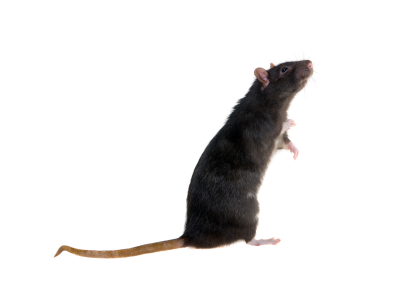Complete Rodent Extermination Solution
Rodent populations grow very quickly so it is best to target them when populations are small and before it becomes a full-blown rodent infestation. A successful and effective rodent control strategy typically involves sanitation measures, rodent proofing (exclusion), and population reduction (trapping).
Inspection
Understanding each home or business is unique a thorough inspection of should be done identifying any signs of rodent activity and potential entry points. When the inspection is complete you should develop a plan to address your specific rodent problem.
Rodent-Proofing Your Home or Business
It doesn’t take a very big hole for a rodent to gain entry into a structure. Rodents are capable of squeezing through holes that appear to be much too small for them – mice can enter a home through a hole as small as a dime; rats can enter through a hole as small as a quarter. The most successful and permanent form of rodent control is to prevent rodents from entering your home, thereby eliminating shelter. To remediate this problem of entry such as any holes, crevices, or gaps that are larger than 1/4 inch through which rodents could use to enter your home seal them. By removing the places rodents have to find shelter and rest, hide, or build nests and rear young, they cannot survive in large numbers in a structure. Wood piles and other rodent shelter sites such overgrown weedy areas should also be eliminated outside also.
Trapping
When a rodent infestation already exists, some form of rodent extermination (e.g., trapping) is necessary to help control the rodent population already inside a structure. Many factors, especially placement, account for the overall success. Rats are apprehensive of anything new in their environment and will avoid a newly placed trap so this process could take some time possibly to up to a few weeks to adapt and accept in their environment. When setting traps you will routinely need to check and promptly remove the rodents as they are trapped.
Sanitation
The most effective rodent control begins with prevention. Trash should be disposed of properly, and sanitary conditions should be maintained. Rodents can survive in small areas with limited amounts of food and shelter. So no matter how clean, all places where food is stored should be made rodent-proof as a preventative measure by keeping food tightly sealed in metal or glass containers. Both human and pet food is an incentive for rodents. Cardboard boxes are attractive to rodents, as they chew them up for use in their nests.
Remediation
Even when rodents and associated insects have been eliminated, it may be necessary to sanitize the property as there may have been long term contamination left behind by rodent feces and urine. Removal of rodent droppings is a very important part of the rodent remediation. Removal of soiled insulation may also be necessary as part of the sanitation portion of the program.
This type of work for rodent extermination and rodent remediation is best left to a professionally certified and licensed organization. For your health and safety this type of work needs to be done when a rodent invasion takes place in your home or business.


 Receive FREE wildlife Tips!
Receive FREE wildlife Tips!
